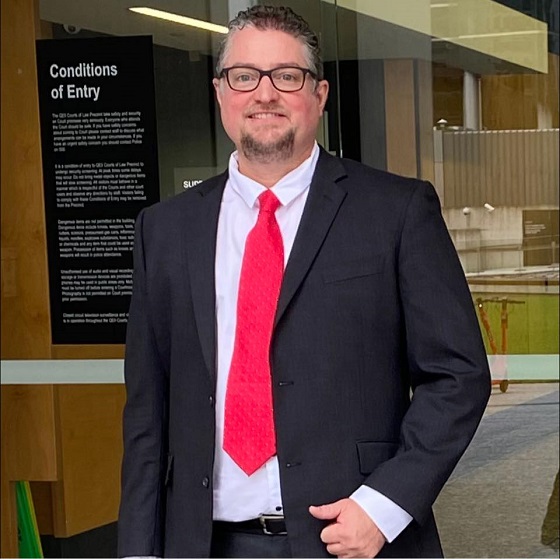Health
Dr. Malone: Bird flu ‘emergency’ in California is a case of psychological bioterrorism

From LifeSiteNews
Contrary to initial reporting from corporate media, the WHO, and the apocalyptic mutterings of Dr. Peter Hotez, there continues to be no evidence indicating the circulation of a highly pathogenic version of bird flu in either animal or human populations.
What is the current threat assessment for Avian Influenza, and has it changed?
I previously established and published a brief baseline threat assessment for Avian Influenza on July 2, 2024. Four dominant parameters must be considered when assessing a potential infectious disease threat to human populations:
- Disease severity (a measurable objective truth)
- Mechanism of transmission and observed transmissibility (an experimentally testable objective truth)
- Evidence of sustained human-to-human transmission (a measurable objective truth)
- Assessment of anticipated future risk (subjective, speculative, and hypothetical)
Politicians and their allies (in BioPharma, academia, and other sectors) have a variety of conflicts of interest and agendas which are not aligned with objective, dispassionate assessment and response to public health and infectious disease issues, and cannot be relied upon to analyze and respond to these key parameters objectively.
An assessment of the conflicts of interest and political agenda(s) of California’s Gavin Newsom is beyond the scope of this analysis. Still, please remember that Governor Newsom clearly mismanaged and overreacted to the COVID threat, as did the World Economic Forum that trained and coached (coaches?) him as a “Young Leader” and clearly continues to influence his political postures.
Although California has remained under Democrat party control – in significant part consequent to “rank choice” voting policies – during the recent presidential election there was a clear shift and momentum toward the Republican party across the majority of the state.
California has a very large dairy industry, and I know that a leader in and representative of that industry has close connections to Newsom. The presence of the virus in Southern California dairy farms is widespread, with over 300 dairy herds testing positive in the last 30 days
Has the threat assessment circa July 2024 changed? Let’s revisit the basics:
Disease severity, December 2024
Disease severity continues to be mild, with the exception of one new case which apparently triggered Newsom to declare a state of emergency in California.
According to Newsweek, “A person in Louisiana was hospitalized in critical condition with severe respiratory symptoms from a bird flu infection, according to state health officials. The patient had been in contact with sick and dead birds in a backyard flock, according to the CDC. Louisiana health officials said the patient is older than 65 and has underlying medical conditions.”
Here is the current CDC threat summary
- H5 bird flu is widespread in wild birds worldwide and is causing outbreaks in poultry and U.S. dairy cows with several recent human cases in U.S. dairy and poultry workers.
- While the current public health risk is low, CDC is watching the situation carefully and working with states to monitor people with animal exposures.
- CDC is using its flu surveillance systems to monitor for H5 bird flu activity in people.



The CDC charts above document that the risk of H5 in humans is low, disease severity is low, and although massive testing has occurred, there are only 61 total “exposure” sources found from cattle, birds, and other mammals.
There are a total of three human cases picked up from the CDC flu surveillance program since February 25, 2024, and a total of 58 cases in the U.S., after testing almost 10,000 people who were exposed to infected animals.
In sum, the profile of disease severity has not changed since July 2024. As opposed to initial reporting from corporate media, dark warnings from the WHO and Dr. Tedros, and the apocalyptic mutterings of Dr. Peter Hotez, there continues to be no evidence indicating the circulation of a highly pathogenic version of this virus in either animal or human populations.
Mechanism of transmission and observed transmissibility
All reported U.S. transmission events involve human exposure in the context of intensive contact during animal husbandry or other known animal hosts, indicating that the mechanism of transmission remains intensive exposure to infected animals and animal carcasses. No change from July 2024.
Evidence of sustained human-to-human transmission
No evidence of sustained human-to-human transmission, now or in the past with this currently circulating variant.
Assessment of anticipated future risk
This appears to be the crux of Newsom’s alarmist response involving the declaration of a “State of Emergency” for bird flu in California. A statement from the governor’s office characterized the move as a “proactive action to strengthen robust state response” to avian influenza A (H5N1), also known as bird flu.
“This proclamation is a targeted action to ensure government agencies have the resources and flexibility they need to respond quickly to this outbreak,” Newsom said in a statement. “Building on California’s testing and monitoring system – the largest in the nation – we are committed to further protecting public health, supporting our agriculture industry, and ensuring that Californians have access to accurate, up-to-date information.”
He added, “While the risk to the public remains low, we will continue to take all necessary steps to prevent the spread of this virus.”
This statement demonstrates either a profound ignorance of the mechanism by which animal influenza viruses spread, including avian influenza, or the presence of a hidden agenda. With a wide range of animal reservoirs, including migratory waterfowl, there is no way that the state of California can prevent the spread of this virus.
READ: Australian doctor who criticized COVID jabs has his suspension reversed
Conclusion
There has been no significant change in the current threat assessment associated with Avian Influenza relative to July 2024. The CDC, which has recently been implicated in industrial-scale “PsyWar” deployment of psychological bioterrorism regarding COVID and has an organizational conflict of interest in promoting vaccines and vaccine uptake, characterizes the current public health risk as low.
My conclusion regarding the Newsom declaration of a “State of Emergency” for bird flu in California is that it is being driven by a hidden agenda. There are multiple hypotheses regarding what that hidden agenda may be, but Newsom’s statement that, “Building on California’s testing and monitoring system – the largest in the nation – we are committed to further protecting public health, supporting our agriculture industry, and ensuring that Californians have access to accurate, up-to-date information,” suggests that this declaration may, at a minimum, reflect advocacy by and for California’s infectious disease testing industry, which includes both academic and commercial components.
Reprinted with permission from Robert Malone.
Alberta
Fraser Institute: Time to fix health care in Alberta

From the Fraser Institute
By Bacchus Barua and Tegan Hill
Shortly after Danielle Smith was sworn in as premier, she warned Albertans that it would “be a bit bumpy for the next 90 days” on the road to health-care reform. Now, more than two years into her premiership, the province’s health-care system remains in shambles.
According to a new report, this year patients in Alberta faced a median wait of 38.4 weeks between seeing a general practitioner and receiving medically necessary treatment. That’s more than eight weeks longer than the Canadian average (30.0 weeks) and more than triple the 10.5 weeks Albertans waited in 1993 when the Fraser Institute first published nationwide estimates.
In fact, since Premier Smith took office in 2022, wait times have actually increased 15.3 per cent.
To be fair, Premier Smith has made good on her commitment to expand collaboration with the private sector for the delivery of some public surgeries, and focused spending in critical areas such as emergency services and increased staffing. She also divided Alberta Health Services, arguing it currently operates as a monopoly and monopolies don’t face the consequences when delivering poor service.
While the impact of these reforms remain largely unknown, one thing is clear: the province requires immediate and bold health-care reforms based on proven lessons from other countries (e.g. Australia and the Netherlands) and other provinces (e.g. Saskatchewan and Quebec).
These reforms include a rapid expansion of contracts with private clinics to deliver more publicly funded services. The premier should also consider a central referral system to connect patients to physicians with the shortest wait time in their area in public or private clinics (while patients retain the right to wait longer for the physician of their choice). This could be integrated into the province’s Connect Care system for electronic patient records.
Saskatchewan did just this in the early 2010s and moved from the longest wait times in Canada to the second shortest in just four years. (Since then, wait times have crept back up with little to no expansion in the contracts with private clinics, which was so successful in the past. This highlights a key lesson for Alberta—these reforms are only a first step.)
Premier Smith should also change the way hospitals are paid to encourage more care and a more patient-focused approach. Why?
Because Alberta still generally follows an outdated approach to hospital funding where hospitals receive a pre-set budget annually. As a result, patients are seen as “costs” that eat into the hospital budget, and hospitals are not financially incentivized to treat more patients or provide more rapid access to care (in fact, doing so drains the budget more rapidly). By contrast, more successful universal health-care countries around the world pay hospitals for the services they provide. In other words, by making treatment the source of hospital revenue, hospitals provide more care more rapidly to patients and improve the quality of services overall. Quebec is already moving in this direction, with other provinces also experimenting.
The promise of a “new day” for health care in Alberta is increasingly looking like a pipe dream, but there’s still time to meaningfully improve health care for Albertans. To finally provide relief for patients and their families, Premier Smith should increase private-sector collaboration, create a central referral system, and change the way hospitals are funded.
Alberta
Province says Alberta family doctors will be the best-paid and most patient-focused in the country

Dr. Shelley Duggan, president, Alberta Medical Association
New pay model, better access to family doctors |
Alberta’s government is implementing a new primary care physician compensation model to improve access to family physicians across the province.
Alberta’s government recognizes that family physicians are fundamental to strengthening the health care system. Unfortunately, too many Albertans do not currently have access to regular primary care from a family physician. This is why, last year, the government entered into a memorandum of understanding with the Alberta Medical Association (AMA) and committed to developing a new primary care physician compensation model.
Alberta’s government will now be implementing a new compensation model for family doctors to ensure they continue practising in the province and to attract more doctors to choose Alberta, which will also alleviate pressures in other areas of the health care system.
This new model will make Alberta’s family doctors the strongest-paid and most patient-focused in the country.
“Albertans must be able to access a primary care provider. We’ve been working hard with our partners at the Alberta Medical Association to develop a compensation model that will not only support Alberta’s doctors but also improve Albertans’ access to physicians. Ultimately, our deal will make Alberta an even more attractive place to practise family medicine.”
“We have worked with the Alberta Medical Association to address the challenges that primary care physicians are facing. This model will provide the supports physicians need and improve patient access to the care they need.”
The new model is structured to encourage physicians to grow the number of patients they care for and encourage full-time practice. Incentives include increases for:
- Maintaining high panel numbers (minimum of 500 patients), which will incentivize panel growth and improve access to primary care for patients.
- Providing after-hours care to relieve pressure on emergency departments and urgent care centres.
- Improving technology to encourage using tools that help streamline work and enhance patient care.
- Enhancing team-based care, which will encourage developing integrated teams that may include family physicians, nurse practitioners, registered nurses, dietitians and pharmacists to provide patients with the best care possible.
- Adding efficiencies in clinical operations to simplify processes for both patients and health care providers.
As a market and evidence-based model, it recognizes and pays for the critically important work of physicians, including the number of patients seen and patient complexity, as well as time spent providing direct and indirect care.
“Family medicine is the foundation of our health care system. This model recognizes the extensive training, experience and leadership of primary care physicians, and we hope it will help Alberta to attract and retain more family medicine specialists who provide comprehensive care.”
Additionally, family physicians who are not compensated through the traditional fee-for-service model will now receive higher pay rates under their payment model, known as the alternative relationship plan. This includes those who provide inpatient care in hospitals and rural generalists. Alberta’s government is increasing this to ensure hospital-based family physicians and rural generalists also receive fair, competitive pay that reflects the importance of these roles.
“This new compensation model will make Alberta more attractive for physicians and will make sure more Albertans can have improved access to a primary care provider no matter where they live. It will also help support efforts to strengthen primary care in Alberta as the foundation of the health care system.”
“Family physicians have been anxiously awaiting this announcement about the new compensation model. We anticipate this model will allow many primary care physicians to continue to deliver comprehensive, lifelong care to their patients while keeping their community clinics viable.”
Quick facts
- Enrolment in the primary care physician compensation model will begin in January with full implementation in spring 2025, provided there are at least 500 physicians enrolled.
- The alternative relationship plan rate has not been updated since it was initially calculated in 2002.
- The new compensation model for family doctors is the latest primary health care improvement following actions that include:
- A $42-million investment to recruit more health providers and expand essential services.
- A new rural and remote bursary program for family medicine resident physicians.
- Additional funding of $257 million to stabilize primary care delivery and improve access to family physicians.
- Implementing the Nurse Practitioner Primary Care Program, which expands the role of nurse practitioners by allowing them to practise comprehensive patient care autonomously, either by operating their own practices or working independently within existing primary care settings.
Related information
-

 Alberta2 days ago
Alberta2 days agoFederal taxes increasing for Albertans in 2025: Report
-

 COVID-192 days ago
COVID-192 days agoChildren who got COVID shots more likely to catch the virus than those who didn’t, study finds
-

 Artificial Intelligence2 days ago
Artificial Intelligence2 days agoWorld’s largest AI chip builder Taiwan wants Canadian LNG
-

 Business15 hours ago
Business15 hours agoSenator Introduces Bill To Send One-Third Of Federal Workforce Packing Out Of DC
-

 MAiD14 hours ago
MAiD14 hours agoNearly half of non-terminally ill Canadians who choose euthanasia say they are lonely
-

 Business2 days ago
Business2 days agoThe gun ban and buyback still isn’t worth it for taxpayers
-

 National2 days ago
National2 days agoCanadian gov’t budget report targets charitable status of pro-life groups, churches
-

 Business2 days ago
Business2 days agoFor the record—former finance minister did not keep Canada’s ‘fiscal powder dry’








